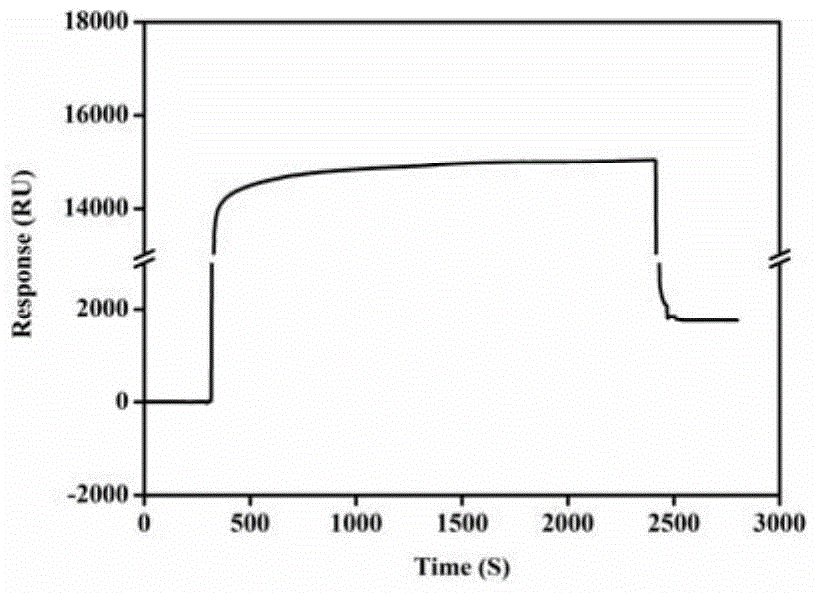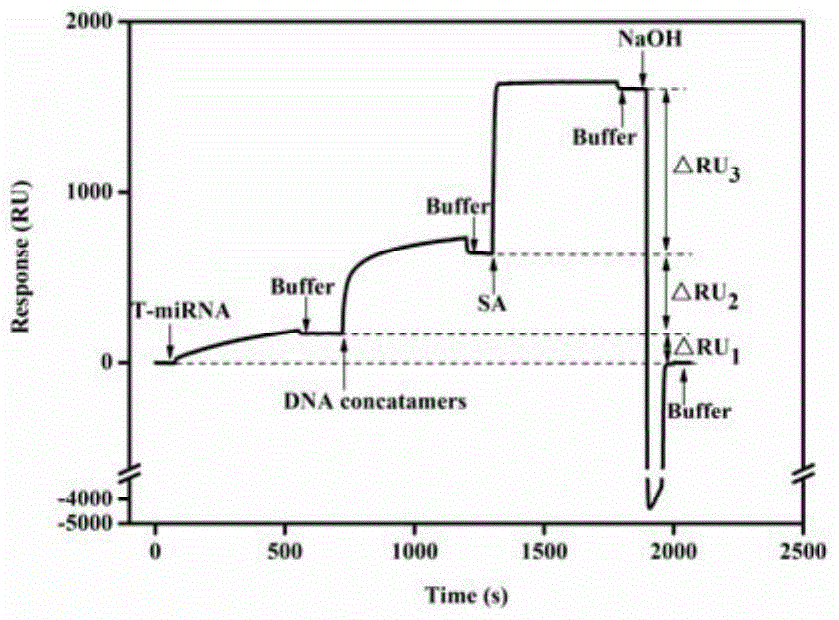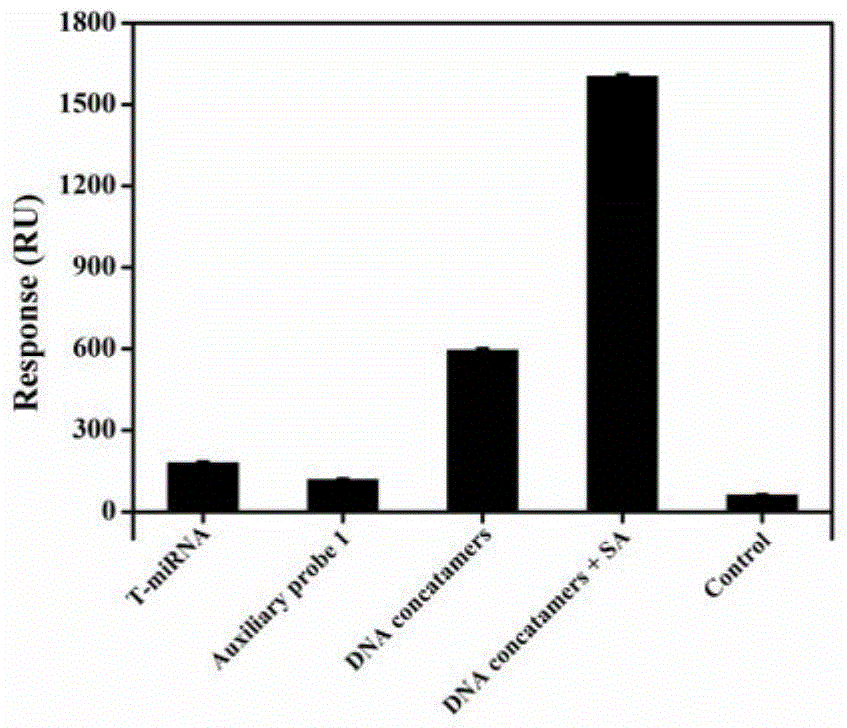A surface plasmon resonance sensor and its preparation and application
A surface-immobilized, miRNA-21 technology, applied in the field of biosensors, can solve the problems of immature research and application of SPR sensors
- Summary
- Abstract
- Description
- Claims
- Application Information
AI Technical Summary
Problems solved by technology
Method used
Image
Examples
Embodiment 1
[0101] Example 1 Construction of a surface plasmon resonance sensor for detecting MicroRNA-21
[0102] 1. Materials and methods
[0103] 1.1 Materials
[0104] miRNA-21 was purchased from Dalian Takara Company, auxiliary DNA probe 1 and auxiliary DNA probe 2 were synthesized by Shanghai Sangon Bioengineering Co., Ltd., streptavidin was purchased from Sigma-Aldrich, KH 2 PO 4 , NaCl, Na 3 PO 4 .12H 2 O, EDTA-2Na and other reagents were purchased from Chongqing Maoye Chemical Reagent Co., Ltd. The composition and components of the hybridization solution were: 450mMNaCl, 30mM NaCl 3 PO 4 .12H 2 O, 3mM EDTA-2Na, 0.25% Triton×100, pH7.4.
[0105] 1.2 Testing instruments
[0106] The Biocore X-type surface plasmon resonance instrument is a product of Biocore AB, Sweden.
[0107] 1.3 Detection principle
[0108] The working chip is a bare gold chip, and the sulfhydryl-labeled capture probe is firmly immobilized on the bare gold chip through a gold-sulfur bond, and then the...
Embodiment 2
[0123] Embodiment 2 is used to detect the surface plasmon resonance sensor characterization and inspection of MicroRNA-21
[0124] 1. Characterization of Immobilized Capture Probes on a Working Chip
[0125] Such as figure 1 It was shown that the sulfhydryl-labeled capture probes could be well immobilized on the bare gold chip.
[0126] 2. The characterization of adding miRNA-21, auxiliary DNA probes 1 and 2, streptavidin and regeneration solution NaOH respectively is as follows figure 2 Shown are the SPR response signals of adding miRNA-21, auxiliary DNA probes 1 and 2, streptavidin and regeneration solution NaOH at each step:
[0127] △RU1 is the SPR response signal level of miRNA-21;
[0128] △RU2 is the SPR response signal level of the DNA concatemer formed by auxiliary DNA probes 1 and 2;
[0129] △RU3 is the SPR response signal level generated by the combination of streptavidin and auxiliary DNA probe 1-labeled biotin;
[0130] And it can be seen that the regenerat...
Embodiment 3
[0133] Example 3 is used to detect the surface plasmon resonance sensor of MicroRNA-21 and the optimization of its use conditions
[0134] We also have several important conditions in the experimental process, namely capture probes of different sequences, auxiliary DNA probes 1 and 2 of different sequences, ratio of auxiliary DNA probes 1 and 2, concentration of auxiliary DNA probes 1 and 2, The concentration of streptavidin for these three assay conditions was further optimized. For each condition, five points were selected from low concentration to high concentration to carry out a series of experiments.
[0135] 1. Investigate the influence of different capture probes on the surface plasmon resonance sensor:
[0136] The capture probes CP1, CP2, and CP3 were immobilized on the same sensor chip and sealed with MCH to prepare the sensor chip.
[0137] Add 100nM miRNA-2140μL, the flow rate is 5μL.min -1 , the obtained sensing signal is as Figure 4 , it can be seen that the ...
PUM
 Login to View More
Login to View More Abstract
Description
Claims
Application Information
 Login to View More
Login to View More - R&D
- Intellectual Property
- Life Sciences
- Materials
- Tech Scout
- Unparalleled Data Quality
- Higher Quality Content
- 60% Fewer Hallucinations
Browse by: Latest US Patents, China's latest patents, Technical Efficacy Thesaurus, Application Domain, Technology Topic, Popular Technical Reports.
© 2025 PatSnap. All rights reserved.Legal|Privacy policy|Modern Slavery Act Transparency Statement|Sitemap|About US| Contact US: help@patsnap.com



